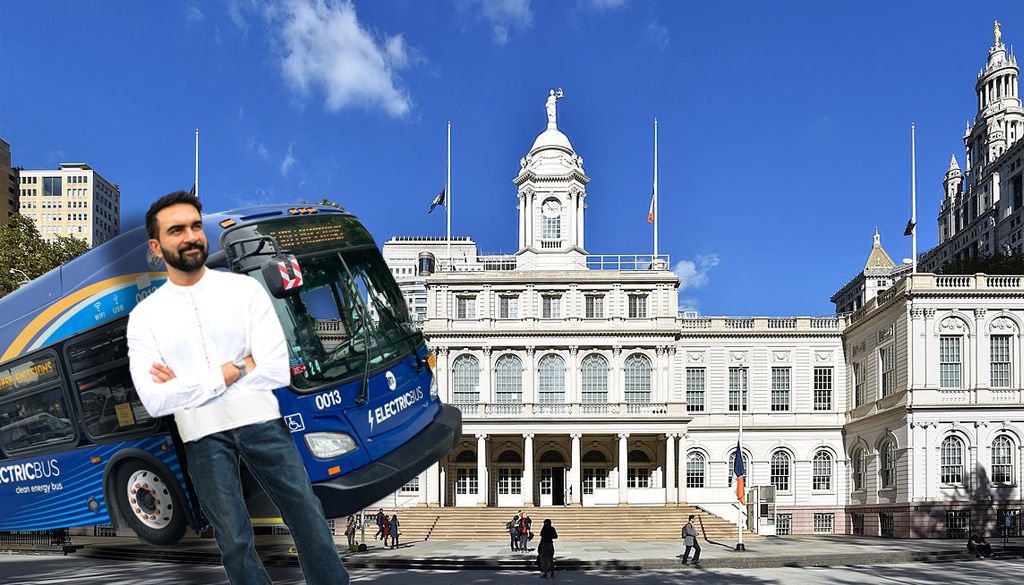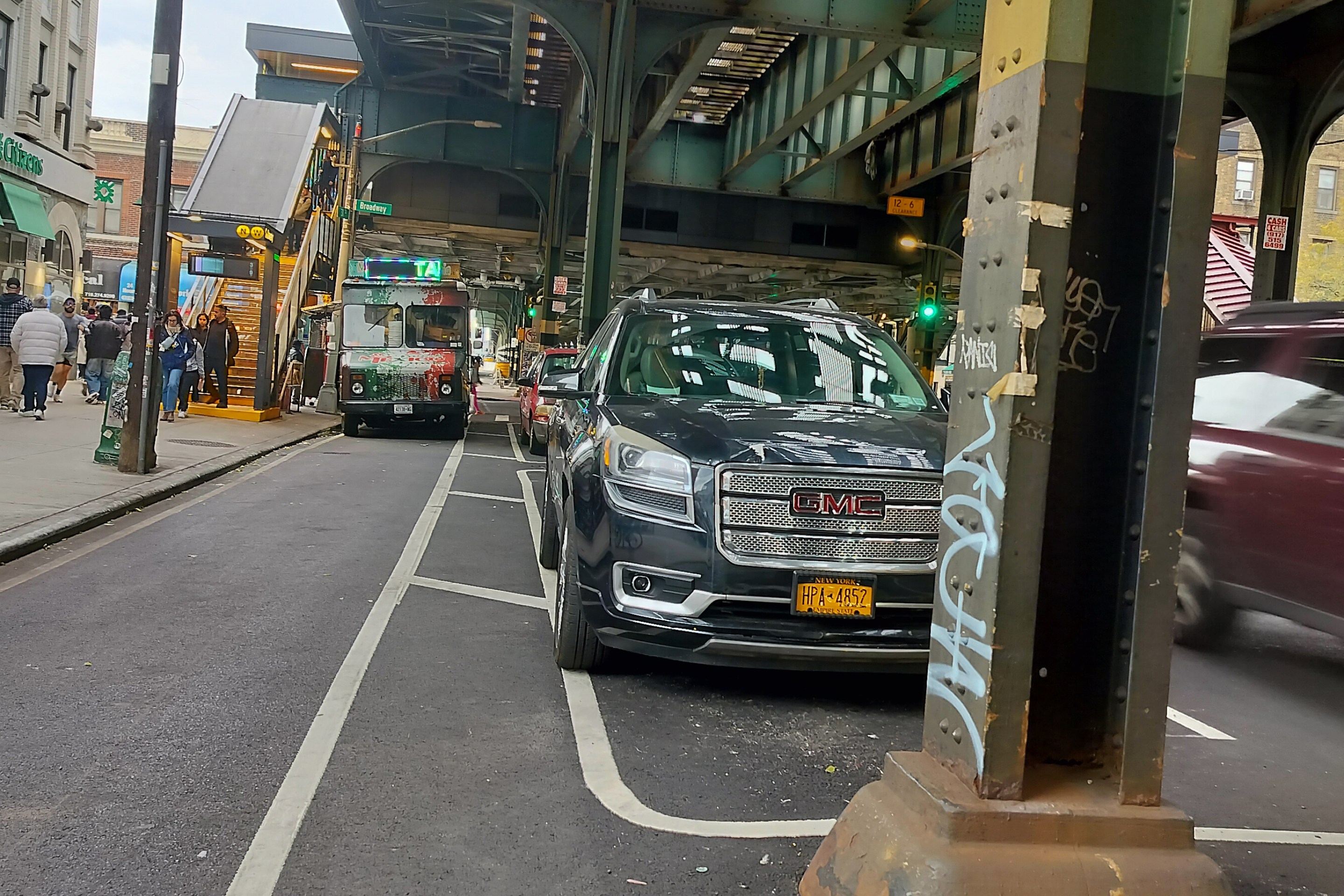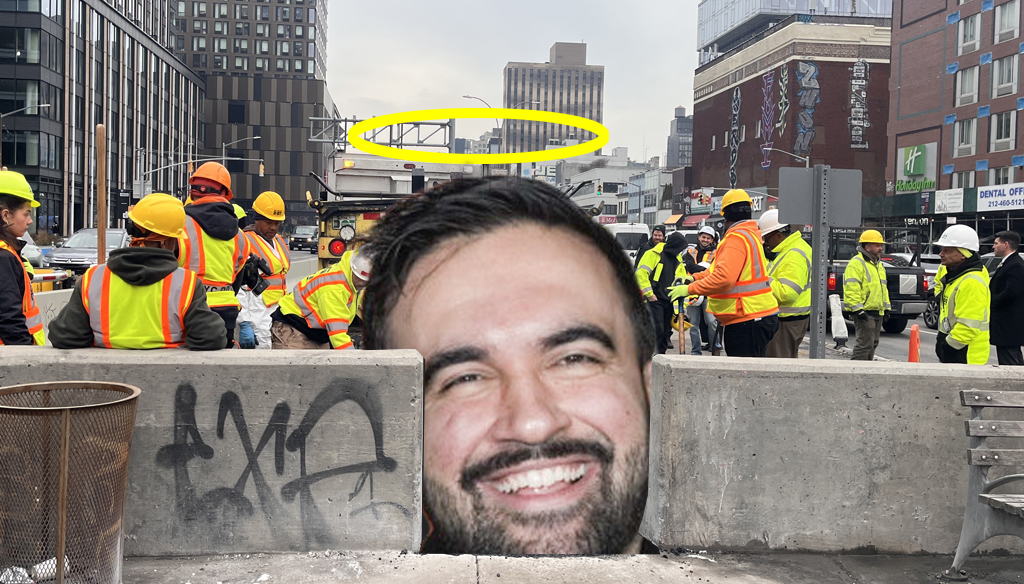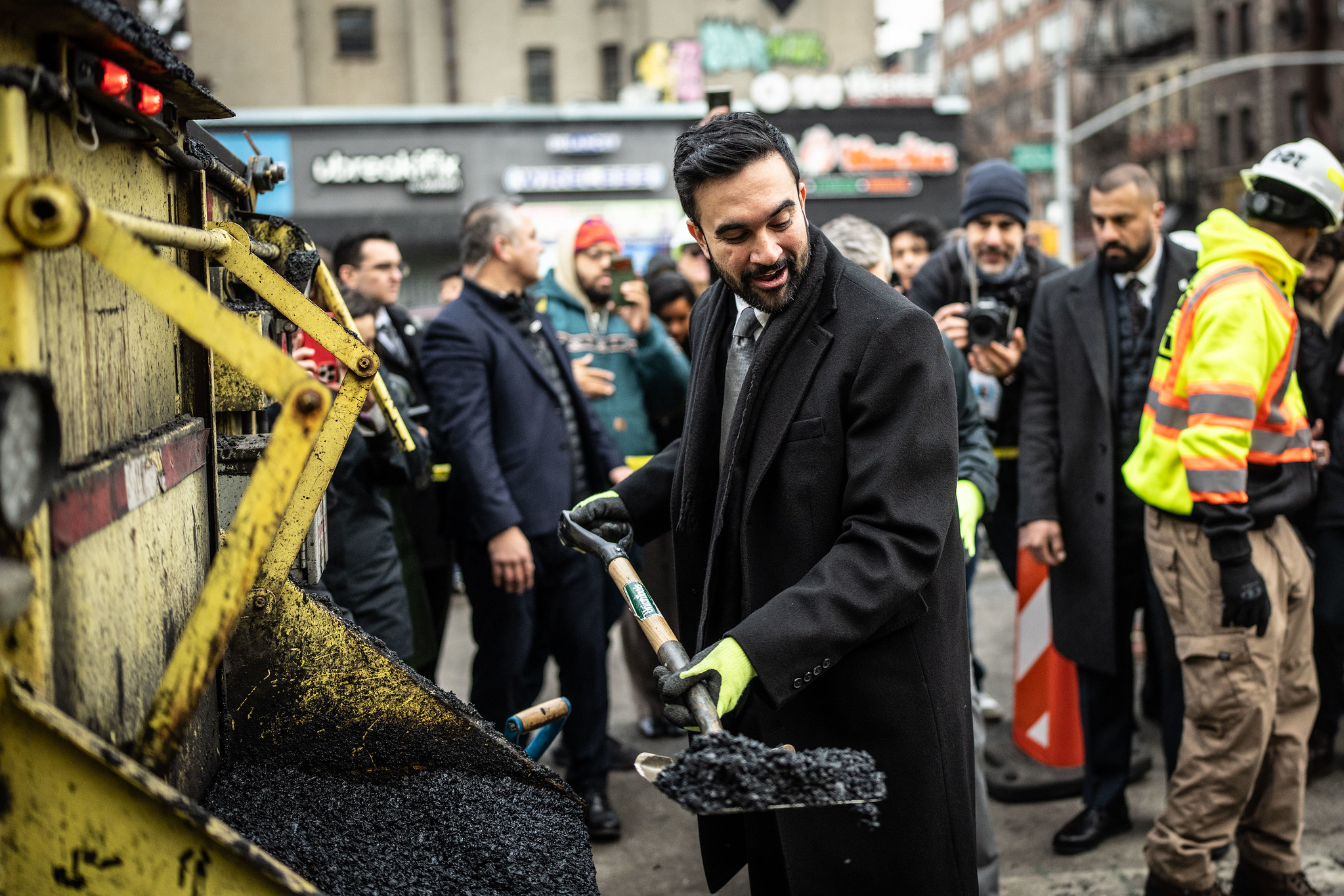Zohran Mamdani shocked the world last month with his upset victory in the Democratic primary for mayor of New York City.
Taking a cue from the great journalists over at The City, we're re-upping Mamdani's answers to our mayoral candidate questionnaire from earlier this year. (His top competitor, Andrew Cuomo, declined to participate.)
Let this Q&A be, in the immortal words of former MTA Chairman Pat Foye, some "great beach reading" for your Fourth of July weekend. Read on:
Now that congestion pricing is operating in New York City, what should the city government do to build on its success in reducing Manhattan traffic?
With congestion pricing finally operational and quickly proving an overwhelming success, we have an opportunity to transform large amounts of public space within and around the relief zone. I would focus on pedestrianization and building protected bike lanes, dedicated bus lanes and other street infrastructure, particularly for high foot traffic areas in and around Times Square and the entire Financial District. I will also work with DOT to reimagine north-south running avenues, e.g. converting general travel lanes to pedestrian space, protected bike infrastructure or bus lanes. Connecting approaches into the congestion relief zone should be similarly reimagined We should also implement busways on all major east-west arteries in Manhattan, building on the success of the 14th Street busway. This infrastructure will encourage mode switching—getting people out of cars and onto bikes or buses—and is essential to continuing to reduce congestion, improve air quality and make the streets safer.
Mayor Adams has had three full years to make New York City buses move faster and reduce commute times, with little to show for it. What will you do to improve bus speeds? (If you are Mayor Adams, please defend your record in this area.)
Expand, expand, and expand our bus lanes some more. I will improve bus speeds by rapidly rolling out high-quality dedicated bus infrastructure across the city. Currently DOT doesn’t have anywhere near the capacity to plan and implement a significant amount of bus projects, and those that are implemented lack crucial elements to increase bus speeds. I would focus on an administrative and approach-based overhaul at DOT that greatly increases capacity to expand the bus network. To run a world-class DOT, we need to attract the best talent: I will end the unnecessary hiring freezes at DOT, make salaries more competitive and offer better conditions like remote work. I would move much more capacity for implementation in-house rather than relying on contractors, who often increase costs and slow timelines. I would also take a much more network-based approach to hitting bus lanes targets and creating a high quality bus system. Planning one or two miles of bus lanes at a time makes it impossible to hit targets and improve speeds. I would instead focus first on crucial arteries that need bus infrastructure and examine ways to create connections across the entire city through the bus network.
In addition to my commitment to making buses fast and free, I also plan to bring true bus rapid transit to New York. Bus rapid transit is high capacity and low cost transit infrastructure that will have widespread economic and quality of life benefits for working class New Yorkers. A car-free bus lane can move 8,000 people an hour; meanwhile a busway on a car-free street can move 25,000 people an hour in each direction. This is an essential service that New Yorkers need, especially those in transit deserts or those forced to rely on the poor service of our current bus system. We currently have the slowest in the nation – crawling at 8 mph on average; New Yorkers deserve high quality, safe and universally accessible transit and these bus investments will make this a reality.
How would you make streets in your district safer for walking and biking? Do you support the city's construction of protected bike lanes? If so, why? If not, why not?
The policy and infrastructure solutions to reduce traffic injuries and fatalities have been well known for years. The major obstacles to success have been a lack of political will and an administration that leverages street usage and design to broker political deals rather than advancing the wellbeing of New Yorkers. I strongly support the construction of protected bike lanes, and I will use the mayor’s full powers to implement vision zero solutions. This includes implementing all the available tools in the city’s current toolkit: pedestrianizing vast swaths of the congestion relief zone, streets near existing public open space, open streets and schools; implementing protecting bike lanes; creating a plan and timeline for building a true bike network and hardened daylighting at every intersection in the city; and more. To make sure infrastructure solutions can be implemented quickly and effectively, I will greatly expand the resources available to DOT to conduct this work.
What will you do to get reckless drivers off New York City streets?
I will establish enforcement-based solutions to changing driver behavior, like expanding all of the city’s automated enforcement systems to reduce speeding, keep bike and bus lanes clear and prevent recidivist drivers from getting back behind the wheel. I would remove enforcement of traffic violations from the NYPD and place it under the purview of DOT. Moving this power from the NYPD will allow for true accountability and oversight in enforcement, and automated enforcement will end racially biased traffic stops. To supplement this, penalties for using ghost plates, obscuring plates or using illegal license plates and chronically speeding in school zones or through red lights should be steeper, with recidivist dangerous drivers losing their licenses.
Drivers often complain that there is not enough "parking" in their neighborhoods. What is the city's responsibility to address this complaint? Related, were you satisfied by the final version of Mayor Adams's City of Yes for Housing Opportunities?
More than 75 percent of the public right of way in New York City is dedicated to the movement and storage of personal vehicles, and this space contains millions of free, on-street parking spaces. Using our public space in this way neglects the large majority of New Yorkers who walk, bike or take transit to get where they are going everyday, and repurposing some of it is a critical part of actually improving New Yorkers’ quality of life.
City of Yes, and especially the Council’s work to fight displacement and include deeper housing affordability within it, was a step in the right direction to address the housing crisis, but there is more we can do. In my housing plan, I call for increased zoning capacity around transit hubs, upzoning wealthy neighborhoods, and fully eliminating the parking mandate citywide. A critical missing piece of City of Yes is enabling more deeply affordable housing to be built at scale. We're a long way off from for-profit developers doing this, yet this is where the greatest emergency is. This requires the public sector to play a role and is why my housing plan leads with tripling the City’s production of publicly subsidized, permanently affordable, union-built, rent-stabilized homes—constructing 200,000 new units over the next 10 years.
Electric bikes are a vital tool for delivery workers and for people seeking to reduce their use of private cars. And the electric Citi Bike is extraordinarily popular. Some cities and states are subsidizing purchases of e-bikes in the same way that they subsidize electric cars. Yet there are also concerns that streets are unsafe to pedestrians and cyclists. What would you do to both expand e-bike use and make streets safer?
E-bikes are an important transportation mode, and one that will only become more popular. We know that when individuals have access to an e-bike, they are very likely to use it for trips that would otherwise be made using a personal vehicle. This mode shifting is crucial to ensuring a sustainable future for our cities. Subsidizing e-bike purchases is a policy my administration would support. This must be done in tandem with ensuring safety. Right now, billion dollar app companies create unsafe conditions for e-bike riders and other New Yorkers walking and biking. Delivery workers keep this city running by supplying groceries, meals, and medications 24/7, yet they are forced by these companies to complete deliveries at break-neck speeds. My administration will ensure we use every tool to regulate the companies which create these working conditions. This must be paired with rapid expansion of the city’s protected cycling network to ensure we have the infrastructure needed to keep everyone safe.
During the pandemic, the city repurposed parking and roadway space for outdoor dining and open streets. Will you commit to expanding both these people programs — if so, how? And if not, why not?
Yes. Firstly, I support making outdoor dining a year round program. Outdoor dining not only brought liveliness and joy to New York City’s streets, it fueled our economy and boosted small businesses—the heart of this city. I would also eliminate the unnecessary and cumbersome design restrictions placed on restaurants and streamline the process by which restaurants and cafes can provide outdoor dining. Secondly, Open Streets are a critical program that I would also expand. One way I would achieve this is by bringing school streets to every school in the city—creating more structured outdoor play time, smoother and safer arrival and pickup times, space for afterschool programming and community meetings, improving air quality and more.
This can be done easily by changing the program from one that schools opt into to one that they are automatically enrolled in (unless they choose to opt out). To support other Open Streets — full closure and limited local access programs — a number of interventions are needed. First off, much more city funding needs to be made available to the partner organizations that operate Open Streets. Currently, Open Streets reimbursement grants administered by DOT are capped at $20,000 a year. Open Streets partners simply cannot run robust pedestrianization programs for a full year with such limited funding. Around the world, cities are putting many times this amount into pedestrianization programs — Montreal makes up to $700,000 (CAN) directly available to merchants associations that operate car-free streets, and Paris is going even further, planning to invest €300 million to create over 100 hectares of pedestrian areas by 2030. In addition to increasing funding, we must invest further in permanent infrastructure changes on Open Streets corridors. Using infrastructure to pedestrianize streets rather than doing this on a temporary basis will greatly reduce the labor and operational costs associated with Open Streets and make the program much more sustainable. To supplement all of this, I would explore a regular pedestrianization program on Sundays and holidays, taking inspiration from Bogota and Mexico City.
How often do you commute to work by bike? (Be honest, as we will be checking.)
I use Citi Bike to supplement my daily subway and bus travel, biking on average 3 times per week — even in the winter!






